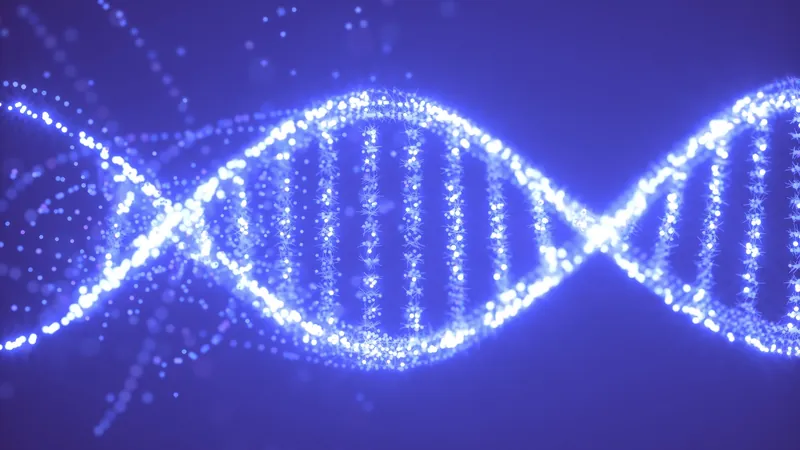
Unlocking Ancient Secrets: Could a Lost Gene Revolutionize Gout Treatment?
2025-09-04
Author: Yu
A Revolutionary Discovery in Gout Treatment
Imagine a gene lost to evolution millions of years ago suddenly holding the key to alleviating one of the most painful forms of arthritis known to humanity—gout. A groundbreaking study suggests that reactivating this ancestral gene could offer a new beacon of hope for those suffering from this debilitating condition.
Understanding Gout: The Pain That Strikes Without Warning
Gout is no ordinary arthritis; it’s a fierce enemy that strikes with sudden and severe joint pain, often leaving its victims immobilized. Triggered by excessive uric acid in the blood, it manifests as sharp crystals forming in the joints, leading to excruciating inflammation that can drag on for days.
Current Treatments: Why They Fall Short
Despite a variety of drugs designed to manage uric acid levels, many fall short due to side effects or limited effectiveness, pushing researchers to seek more innovative solutions.
The Power of CRISPR: Resurrecting the Lost Gene
Enter CRISPR gene editing. In a pioneering study published in *Scientific Reports*, researchers have turned back the clock by reactivating a gene once crucial for breaking down uric acid. As Eric Gaucher, a geneticist involved in the study, explains, human cells still possess the know-how to utilize the protein produced by this ancient gene. Initial lab studies with human cells hint at a promising path toward gene therapy as a future treatment option.
Why Are Only Humans Affected?
Gout is surprisingly rare in most mammals outside of primates; the reason? Other animals retain an active gene for the enzyme uricase, which effectively breaks down uric acid. In contrast, evolutionary mutations have rendered the uricase enzyme ineffective in humans. Some experts theorize that this switch may have provided a survival advantage by converting fruit sugars into fat, crucial for our ancestors during tough winters.
Reviving the Past: Engineering the Uricase Gene
To explore solutions, researchers have meticulously traced ancient genes through comparative DNA analysis. By piecing together the sequences of ancestral genes, they can recreate ancient proteins in the lab. In this study, they successfully integrated the ancient uricase gene into lab-grown human liver spheroids, resulting in decreased uric acid levels and less fat accumulation related to fruit sugars.
A Safer Future for Gout Patients?
While current therapies can effectively manage uric acid through uricase injections derived from various animal sequences, they often trigger adverse immune reactions. Imagine a future where patients could simply have their own cells produce uricase, drastically reducing these risks. A restored, ancient gene could pave the way for such a safer therapy.
What's Next: From Lab to Life
While exciting, these breakthroughs are just the beginning. Researchers are now looking to transition their studies from lab spheroids to live mice, employing advanced nanoparticle delivery systems for targeted gene editing. If successful, this approach could reshape the landscape of gout treatment and possibly set a precedent for utilizing ancient genes in modern medicine.
A Vision for the Future
Gaucher envisions a future where the wisdom of our genetic past enhances present-day treatments: "My ultimate goal is to marry molecular evolution with clinical medicine." As researchers delve deeper into this fascinating fusion of old and new, the prospects for gout—and potentially other conditions—look more promising than ever.




 Brasil (PT)
Brasil (PT)
 Canada (EN)
Canada (EN)
 Chile (ES)
Chile (ES)
 Česko (CS)
Česko (CS)
 대한민국 (KO)
대한민국 (KO)
 España (ES)
España (ES)
 France (FR)
France (FR)
 Hong Kong (EN)
Hong Kong (EN)
 Italia (IT)
Italia (IT)
 日本 (JA)
日本 (JA)
 Magyarország (HU)
Magyarország (HU)
 Norge (NO)
Norge (NO)
 Polska (PL)
Polska (PL)
 Schweiz (DE)
Schweiz (DE)
 Singapore (EN)
Singapore (EN)
 Sverige (SV)
Sverige (SV)
 Suomi (FI)
Suomi (FI)
 Türkiye (TR)
Türkiye (TR)
 الإمارات العربية المتحدة (AR)
الإمارات العربية المتحدة (AR)